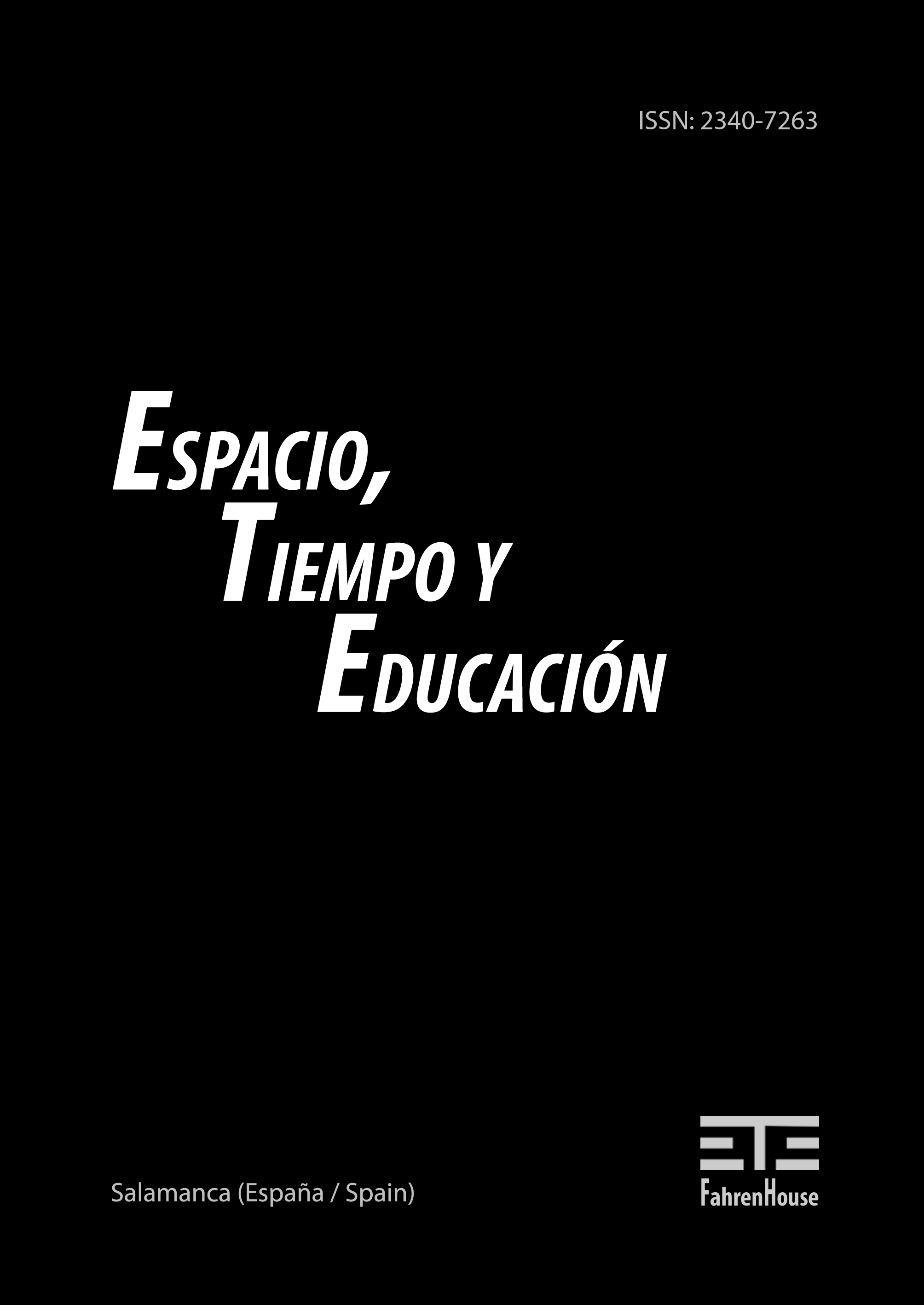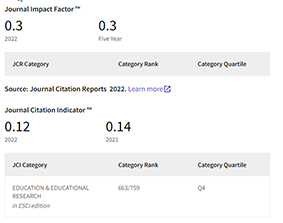West Meets East. A Well-Rounded Education versus an Angular Education in Japan
DOI:
https://doi.org/10.14516/ete.213Palabras clave:
A well-rounded education, a liberal arts education, a Zenjin education, Kuniyoshi Obara, the Japanese education systemResumen
The idea of a well-rounded education is widely recognized, and as IB programs and the concept of an IB education are gradually yet steadily infiltrating the Japanese education system, Japan can no longer ignore the existence of a Zenjin («whole person») education, which was first practiced in 1921 by a Japanese philosopher of education named Kuniyoshi Obara. This paper compares the philosophical and theoretical foundations of Obara’s Zenjin education and a so-called «well-rounded» education, revealing the similarities between them and using these as a rationale for educational reform in Japan. In the literature review, the recent debate between well-rounded and angular education proponents is addressed, and it is concluded that a well-rounded education still has a role to play, even though there are a certain number of competitive and prestigious universities/colleges that question its merits and give priority to high school graduates who have specialized solely in one area, such as sports, arts, or a standard-deviation-value-oriented, angular education. Regardless of the fact that attaining good scores on academic tests is often thought to be a reasonable way for children to meet their aspirations and expectations and receive benefits from a meritocracy and an academic hierarchy, especially in Japan, this paper insists that a true form of education should be concerned with each individual’s whole personality, and therefore a Zenjin, or well-rounded, education must play a core role in the education system. Indeed, the current Japanese education system is collapsing and deteriorating, exposing children to serious problems such as bullying, school-related suicides, etc. so preventative measures urgently need to be put in place, and it is time to think carefully about what a Zenjin education has to teach us.
Referencias
Bernadel, R. (2014, October 3). A Well-rounded Education: Getting Your Students to See How the IB Fits into Their Bigger Picture. Rachelle’s Corner. Retrieved from: https://blogs.ibo.org/universityadmissions/2014/10/03/a-well-rounded-education-getting-your-students-to-see-how-the-ib-fits-into-their-bigger-picture/
Bollnow, O. F. (1972). Einführung in die Philosophische Pädagogik. Hechingen: Otto Friedrich Bollnow Gesellschaft e. V.
Bossy, S. (2000). Academic Pressure and Impact on Japanese Students. McGill Journal of Education, 35(1), 71-89.
Fujikashi, R., & Obara, K. (2010). Significance of Active Participation in Round Square and Tamagawa Adventure Program at Tamagawa Gakuen. Tamagawa University Research Institute Report, 16, 1-9.
Hersh, R. H. (2009). A Well-Rounded Education for a Flat World. Educational Leadership, 67(1), 50-53.
Hersh, R. H., Bundick, M., Keeling, R., Keyes, C., Kurpius, A., Shavelson, R., & Swaner, L. (2008). A Well-rounded Education for a Flat World. Washington: Bringing Theory to Practice.
Ichikawa, S. (1991). Distinctive Features of Japanese Education. Tokyo: National Institute for Educational Research.
IBO. (2013). What Is an IB Education? Geneva: International Baccalaureate Organization.
IBO. (2015). The IB: an Historical Perspective. Geneva: International Baccalaureate Organization.
Kleiman, J. (2014, April 28). Why Getting a Liberal Arts College Education is not a Mistake. Forbes. Retrieved from: https://www.forbes.com/sites/work-in-progress/2014/04/28/why-getting-a-liberal-arts-college-education-is-not-a-mistake/#78c398e62a15/
Kobayashi, M. (2004). Kuniyoshi Obara. UNESCO, International Bureau of Education, XXXIV(2), 223-239.
Krislov, M. (2013, December 5). The Enduring Relevance of a Liberal-arts Education. The Henchinger Report. Retrieved from: http://hechingerreport.org/the-enduring-relevance-of-a-liberal-arts-education/
NIER. (2011). Distinctive Features of Education in Japan. Tokyo: National Institute for Educational Research.
Obara, K. (1969). Zenjin Kyoiku-ron. Tokyo: Tamagawa University Press.
Obara, K. (2003). Theory of Zenjin Education (T. G. Douglas, Trans) Tokyo: Tamagawa University Press. (Original work published 1969).
OECD. (1971). Reviews of National Policies for Education: Japan. Paris: Organization for Economic Co-operation and Development.
Reade, N. (2013). Line of Scrimmage. Deerfield Magazine. Fall, 18-29.
Sakuma, H. (2017). Kuniyoshi Obara’s Zenjin Education at Tamagawa Gakuen. In Yamasaki, Y., & Kuno, H. (Eds.), Educational Progressivism, Cultural Encounters and Reform in Japan (pp. 93-103). Oxon: Routledge.
Stoddard, G. D. (1946). Report of the United States Education Mission to Japan. Washington: the United States Government Print Office.
Tamagawa Gakuen. (1960). Education of Tamagawa. Tokyo: Tamagawa University Press.
Thys, F. (2013, December 26). Well-rounded versus Angular: the Application Colleges Want to See. 90.9 WBUR-FM. Retrieved from: http://legacy.wbur.org/2013/12/26/well-rounded-passion-college-application/
Tracy, P. (2006). IDEALS at Work: Education for World Stewardship in the Round Square Schools. Deerfield: The Deerfield Academy Press.
Wenzler, H., & Kwietniewska, K. (2012). Educating the Global Lawyer: the German Experience. Journal of Legal Education, 61(3), 462-467.
Yamasaki, Y. (2017). Introduction: Progressivism, New Education, and Cultural Encounters. In Yamasaki, Y. & Kuno, H. (Eds.), Educational Progressivism, Cultural Encounters and Reform in Japan (pp. 1-10). Oxon: Routledge.







